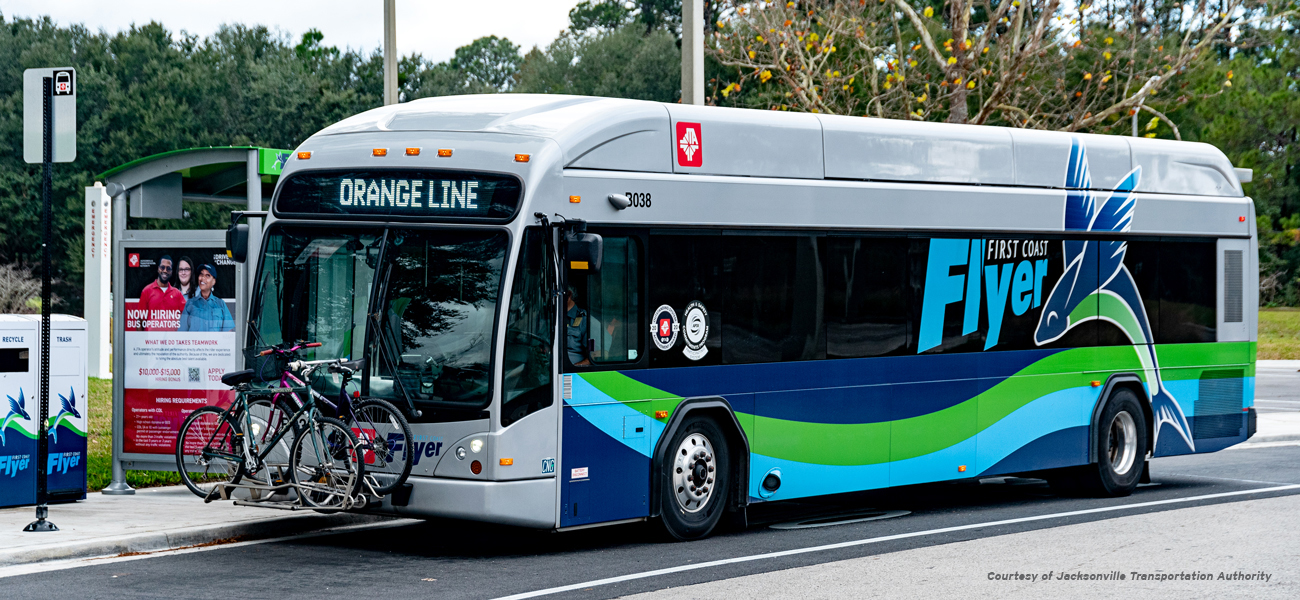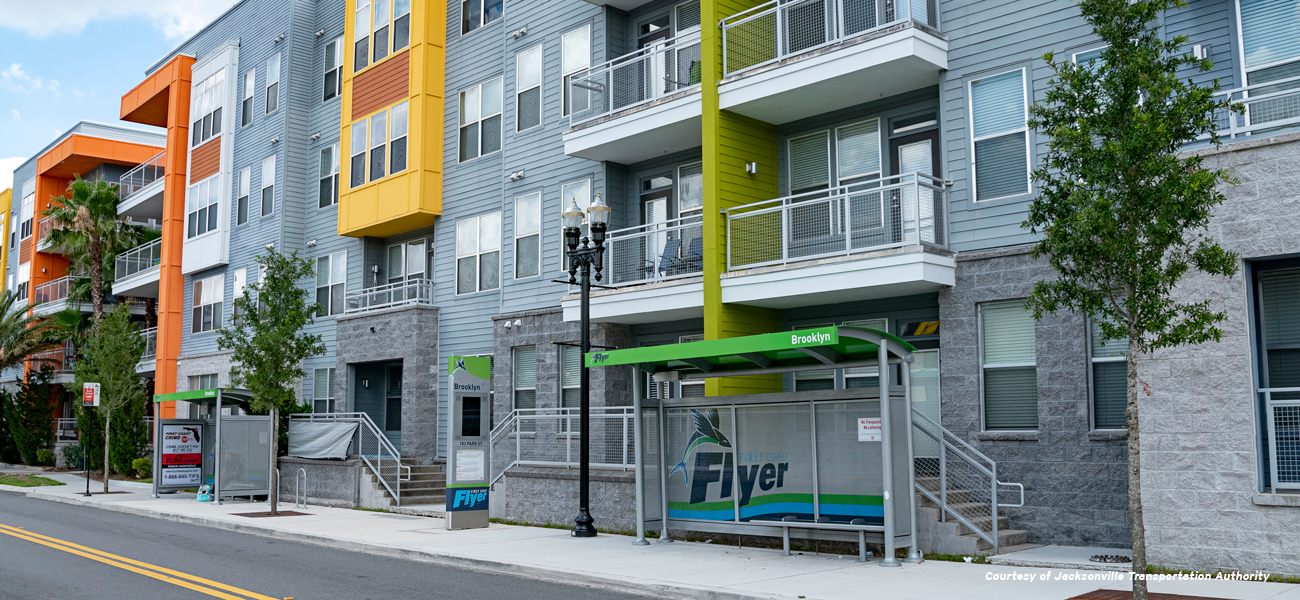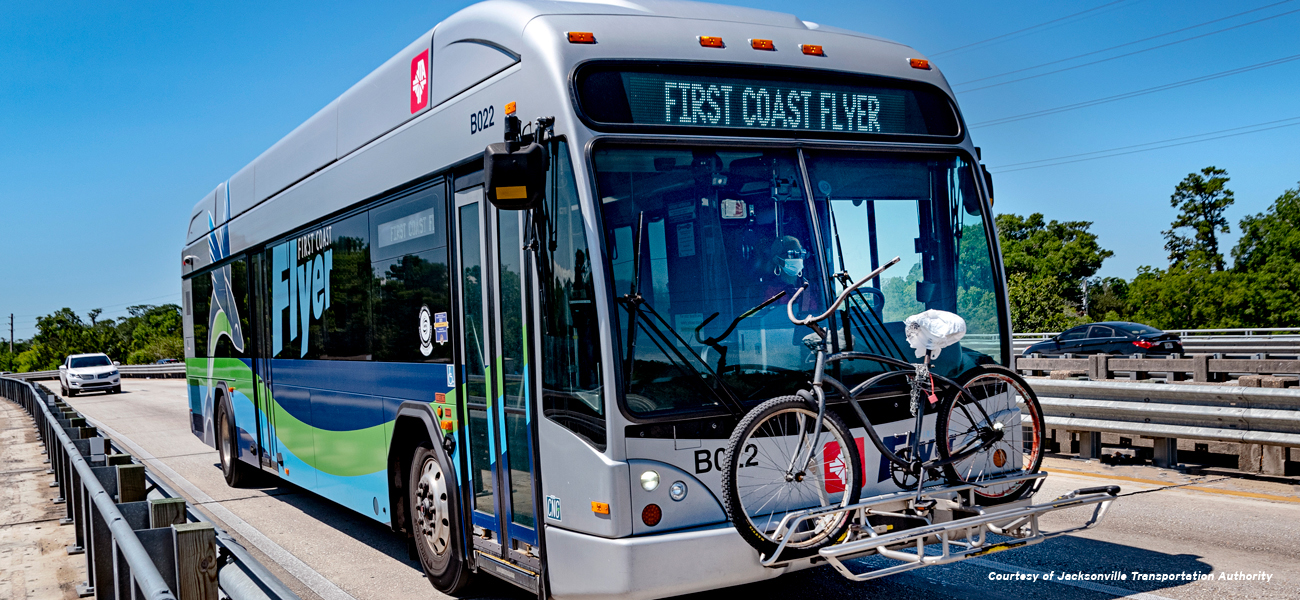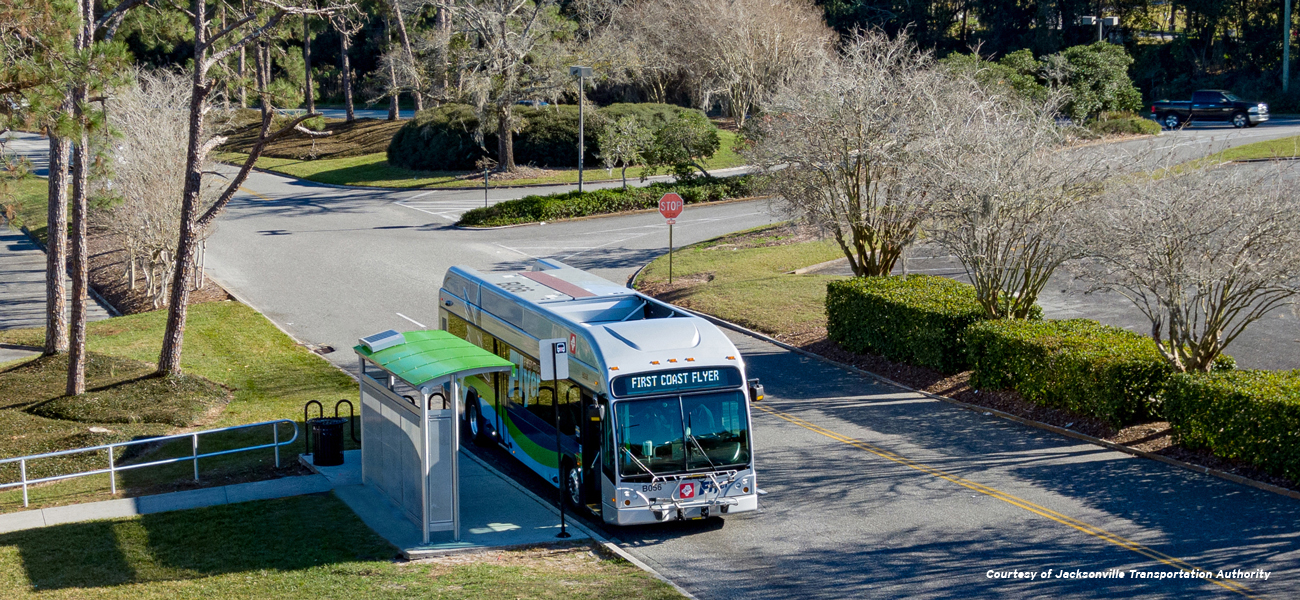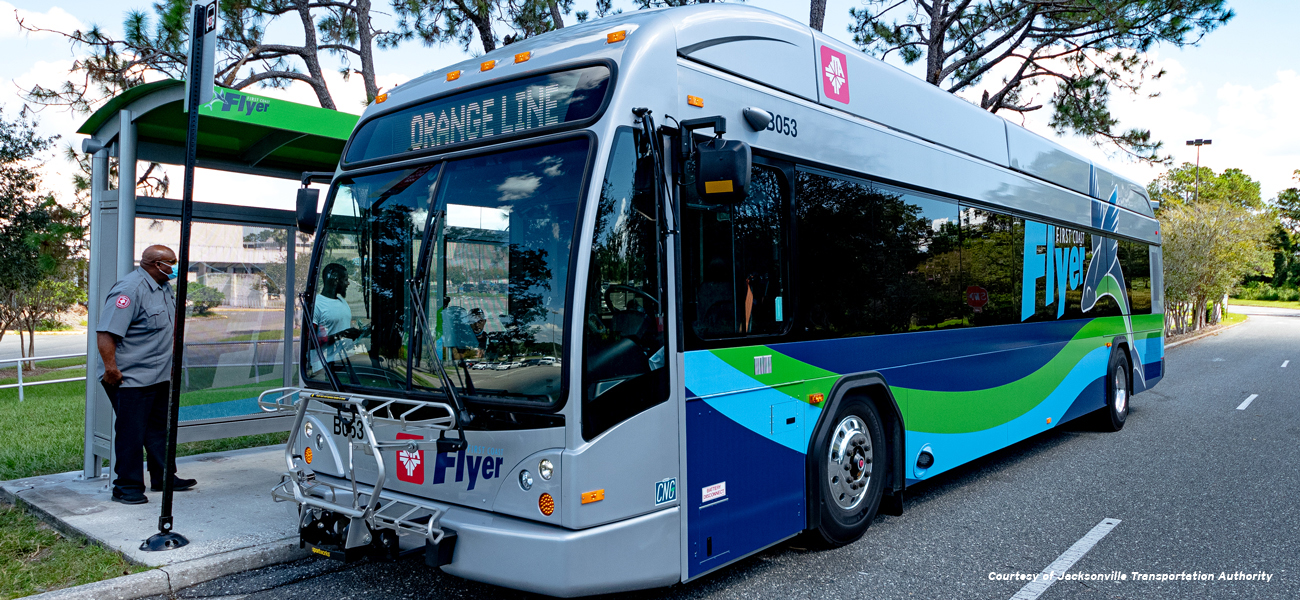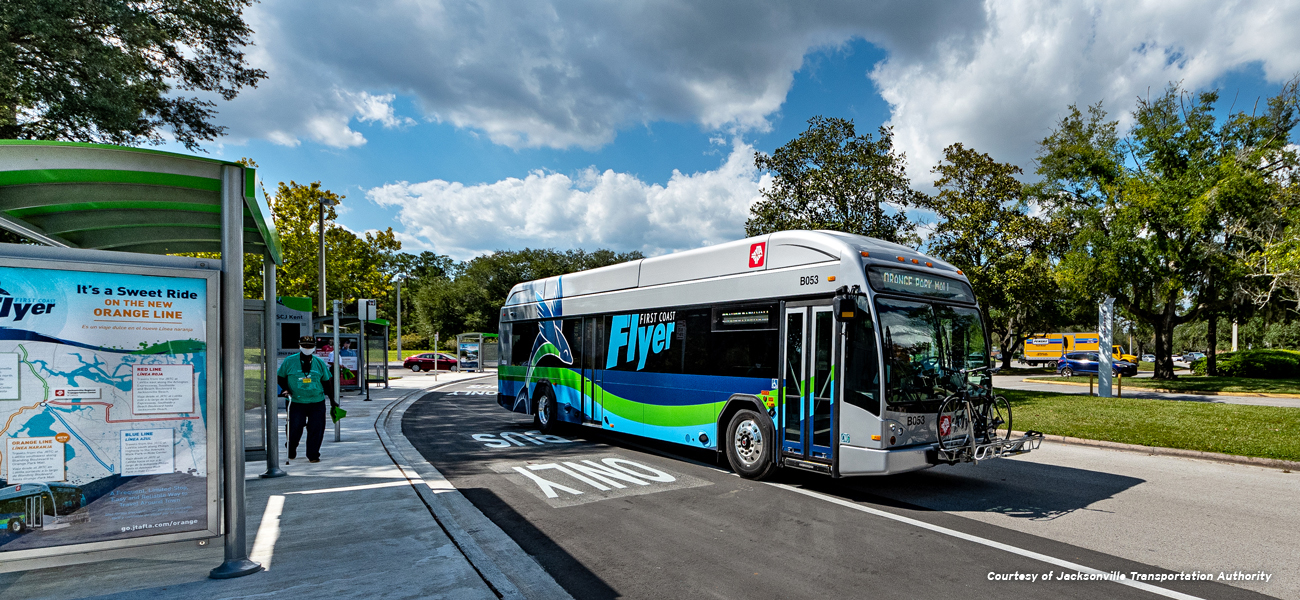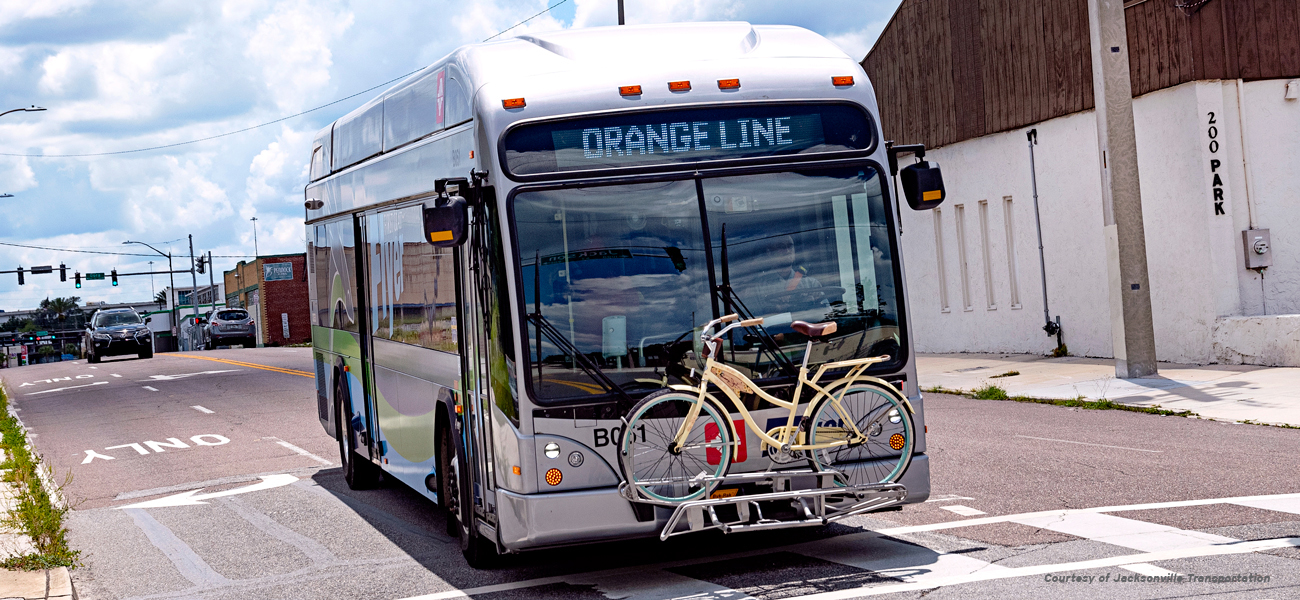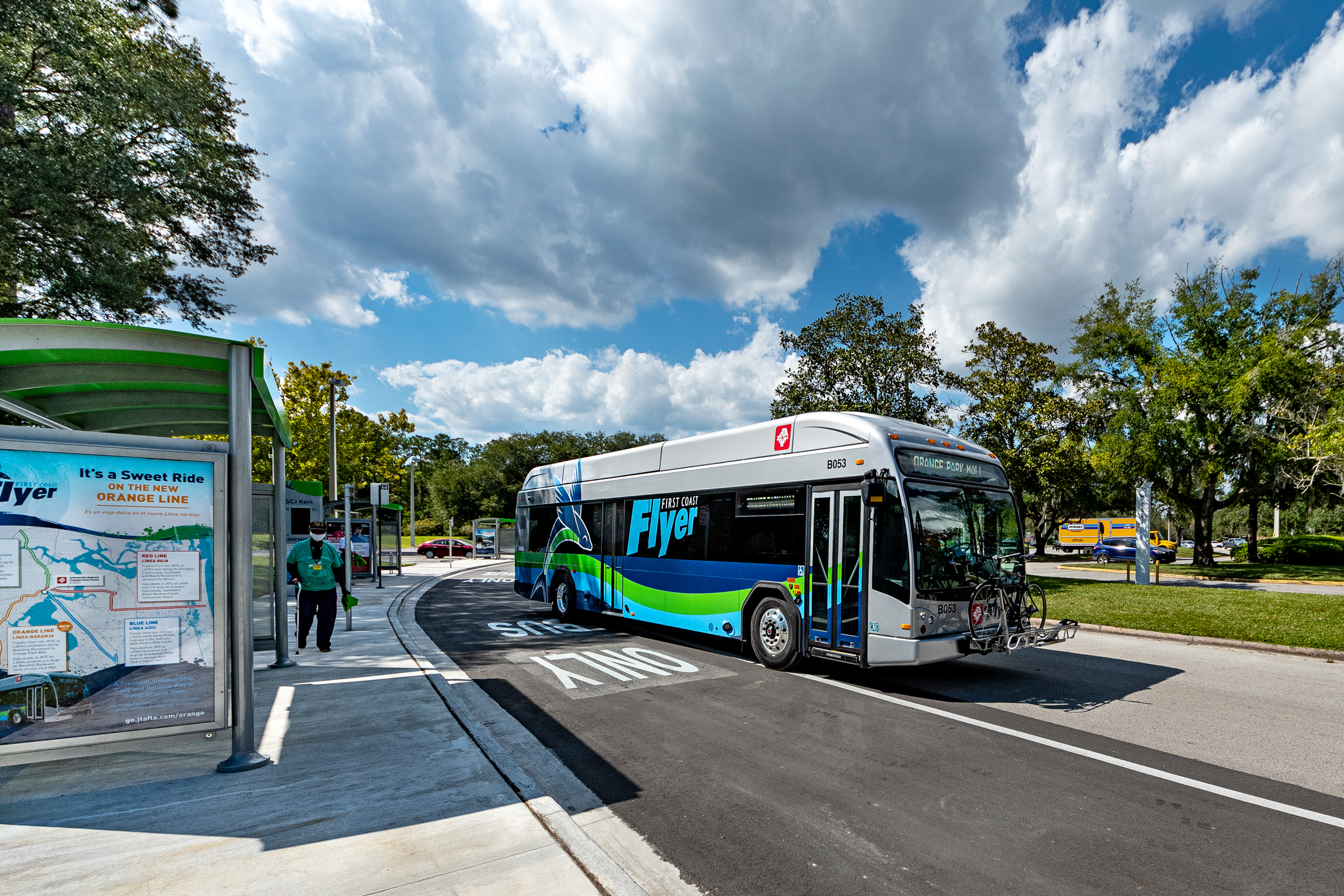
Critical Connection
The Jacksonville Transportation Authority’s new Orange Line
completes its bus rapid transit system, fulfilling a promise
to deliver seamless mobility solutions to northeast Florida.
DESIGNER
2022
For more than 10 years, the Jacksonville Transportation Authority envisioned a bus rapid transit system that would create seamless, elevated-level mobility solutions for all of its northeast Florida customers. That vision was realized with the September 2021 opening of the Orange Line, the fourth and final line in the agency’s 58-mile First Coast Flyer network.
The $33 million project is part of a $138 million BRT program that began in 2014. The Federal Transit Administration provided $90 million in grant funding, along with the Florida Department of Transportation, which provided a $24 million state match to JTA’s local investment.
The Orange Line links JTA’s system to Clay County, the southernmost county in the Jacksonville region. Growing even before the pandemic, the area has become a top destination for people choosing to relocate over the past two-and-a-half years.
JTA already operated fixed-ride and executive-style alternatives for Clay County commuters. The agency saw the need for an additional option that covered the middle ground, allowing its expanding Clay County customer base to catch buses into Jacksonville on a 10- or 15-minute frequency.
“The Orange Line is critical not only because it represented the completion of JTA’s entire bus rapid transit system, but specifically because of the linkage to Clay County,” said Greer Gillis, JTA senior vice president — systems development and capital program. “It made good on our promise to the community to solidify the First Coast Flyer system’s dual-county connection.”
Leading with technology
Serving as prime consultant, HNTB designed the Orange Line’s infrastructure, including:
- Bus rapid transit stations with premium amenities. The First Coast Flyer Orange Line’s 21 BRT stations are “bus stops on steroids,” said HNTB project manager John Fowler. Beyond the shelters and benches standard at most bus stops, racks provide secure bicycle storage, and smart trash cans offer recycling capabilities. Stations are compliant with Americans with Disabilities Act requirements, and lighting was designed to meet federal safety standards. Interactive totems connected to JTA’s communications system improve travel reliability by allowing riders to track the real-time arrival of the next bus and to view the travel time to each successive stop on the route.
- Transit signal priority. The system reduces transit rider delays by extending green lights when a bus is near the intersection.
- Queue jump lanes. JTA’s BRT lines operate on existing Florida Department of Transportation and City of Jacksonville roadways, rather than on dedicated lanes. To keep busses from getting tangled in the lanes they share with other vehicles, the Orange Line project’s second and final phase will build out dedicated queue jump lanes at the three most-congested intersections on the corridor
“JTA is a leader nationally for technology and innovation,” Fowler said. “They’re pushing the envelope to improve transit ridership and overall quality of life in Jacksonville.”
The Orange Line project also included a complete rebuild of the traffic signal at State Road 21 (Blanding Boulevard) and Townsend Road, which required significant utility coordination efforts. The area contained electric and fiber optic lines and water, sewer and gas main lines, some buried up to 13 feet deep. With numerous utility owners over a period of months, HNTB coordinated timing and location of utility moves to identify the final traffic signal pole position.
Going beyond design
During project construction, JTA asked HNTB to provide transit signal priority system installation oversight above and beyond its design scope. The firm’s designers stepped in to download and sift through data, troubleshoot and test equipment to ensure proper operation and to work closely in the field with the contractor.
“HNTB’s post-design services were critical,” Gillis said. “When the contractor met with unknown conditions, HNTB was right there with them to make the changes so JTA’s contractor could move forward. Even outside the design services scope, HNTB was committed to working with us as we came across every challenge, helping us solve it so we could ultimately deliver on the project.”
Delivering mobility for all
Jacksonville is, by area, the largest city in the lower 48 U.S. states. Its population and work centers are spread across a wide geography, challenging JTA to provide effective transit solutions for people with disparate travel origins and destinations.
The Orange Line moves the JTA another step closer to delivering on its mission – to provide accessible transportation options and enhanced mobility for all northeast Florida users – by serving up enhanced travel time reliability and new opportunities to underserved communities along the route.
“Many of the communities the Orange Line serves are not traditionally those that would receive transportation improvement funding,” Fowler said. “The Federal Transit Administration and state dollars invested in this project are connecting these communities to places of employment, as well as job and educational opportunities that weren’t available without this reliable transportation link. The Orange Line is making an impact that materially improves people’s lives.”

John S. Fowler, PE
Northeast Florida Design Leader
(904) 596-7988
HNTB CORPORATION
4651 Salisbury Road, Suite 320
Jacksonville, Florida, 32256
SEE MORE ARTICLES
MORE DESIGNER STORIES
LOWER.COM FIELD
I-69 FINISH LINE
I-74 MISSISSIPPI RIVER BRIDGE
OPPORTUNITY CORRIDOR
SIXTH STREET VIADUCT

